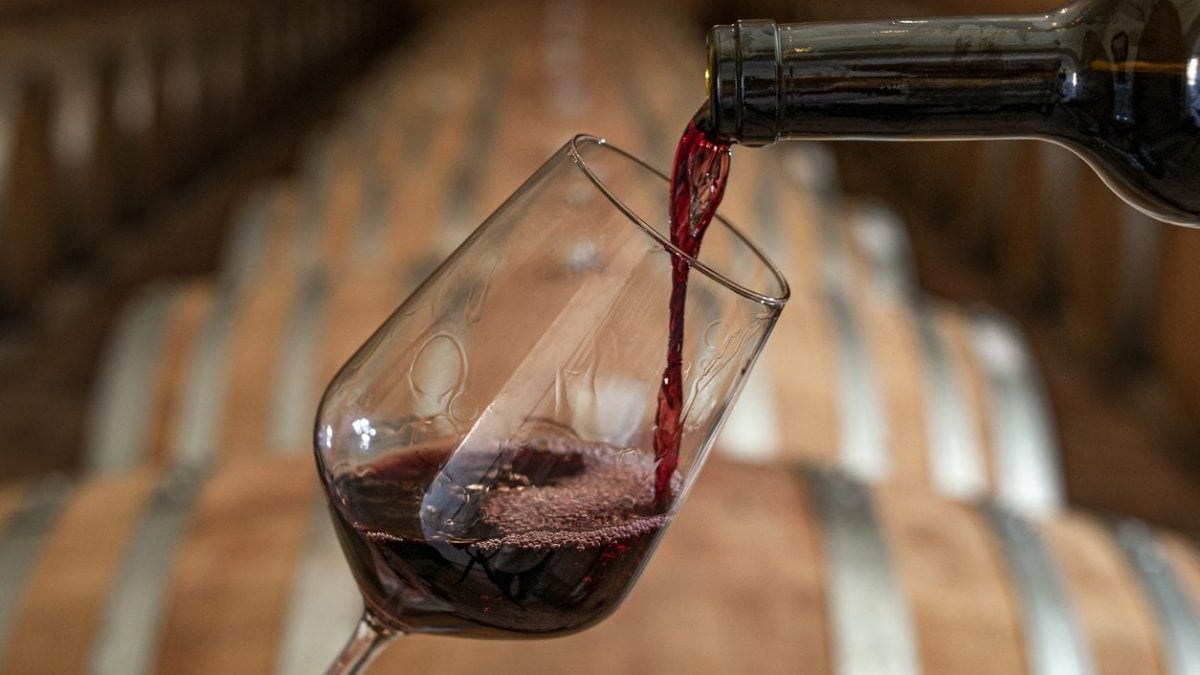
Talking about the amount of wine to pour into a glass may seem like a frivolous topic but it is not at all and it is not even that trivial. There are those who pour a lot, filling the glass to the brim and there are those who pour so little that the glass seems more empty than full, nullifying that famous philosophical meaning. Between these two approaches there is a variety of intermediate behaviors, but the question remains: what is really the right amount? Wine, like any excellent product, deserves to be enjoyed in the best conditions. The amount of wine in the glass is not only an aesthetic question but directly affects the quality of the sensory experience. Filling a glass to the brim does not allow the wine to fully express itself: the surface in contact with the air is limited, oxygenation is insufficient and the aromas remain compressed. On the contrary, pouring too little may not allow you to fully perceive the aromatic bouquet, reducing the pleasure of tasting. Let's look at the professionals' advice together.
The Rules of Ideal Service
To best appreciate a wine, the optimal quantity is around a third of the glass, with a volume of between 100 and 150 ml, depending on the size of the glass. This leaves enough space for the wine to release its aromas and allows the taster to swirl it without risking spilling it. Larger glasses, such as those designed for full-bodied reds, require a particularly careful approach: serving too much wine defeats the very design of the glass, which is designed to amplify the aromas. White wines and rosés, which tend to be served in smaller glasses, follow a similar logic, while for bubbles the situation is slightly different. In the case of a sparkling wine, especially if it is high-quality like a classic method, it is advisable to pour an amount that fills around a quarter of the glass. This allows you to appreciate not only the aromas but also the perlage, a distinctive element that should be observed carefully.
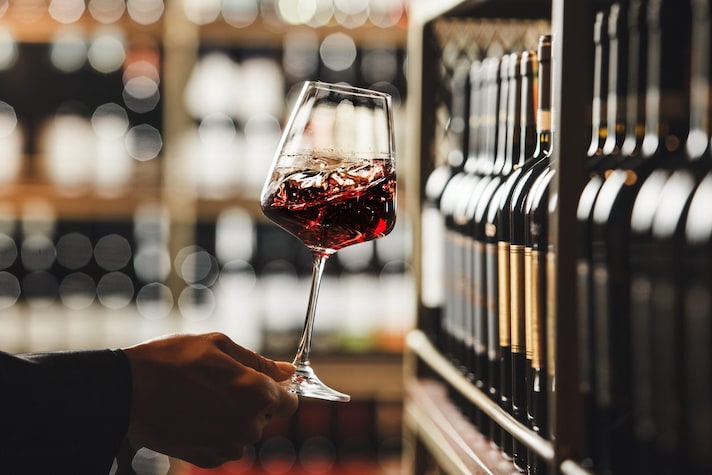
Pouring the right amount of wine is not just a technical matter, but also a gesture of respect towards the product. Wine is the result of a long process, from the cultivation of the vine to the winemaking, passing through the refinement. Each bottle is a concentration of history, territory and passion. Filling the glass too much risks trivializing this journey, transforming a cultural experience into a simple act of consumption. At the same time, limiting yourself to a few drops can give the impression of excessive austerity, almost as if you wanted to reduce wine to an object of study: wine is a pleasure. Tasting is a multi-sensory experience that involves taste, smell, sight and, why not, conviviality: the right amount is the one that enhances every aspect, without excess or deficiencies.
Why Should Wine Be Poured in The Right Quantities?
To truly appreciate a wine and capture every aromatic and gustatory nuance, it is essential to serve it in the right quantity and in the right glass. This attention, often overlooked, makes a huge difference in the tasting experience. Pouring the right quantity guarantees:
- Optimal oxygenation: the wine needs space in the glass to come into contact with the air, a process that releases its aromas and amplifies its complexity.
- Aroma enhancement: each type of wine has a specific glass, designed to concentrate the aromas and guide them towards the nose. Overfilling the glass compromises this dynamic.
- Temperature Control: Wine heats up quickly once poured (about 35.6°F/0.2°C per minute). A balanced dose helps keep it at the ideal temperature for longer.
We said that the general rule is to fill the glass to about a third of its capacity, with a volume between 100 and 150 ml, depending on the size of the glass. These quantities are not always respected but in a restaurant context these quantities are usually reduced, therefore they change by default. For example, during a tasting with many paired courses, the quantity could be reduced so as not to weigh down the palate and allow each wine to be savored in its uniqueness.
It is also important to choose the right glass. The shape and width of the glass are crucial for tasting. Structured reds require wide glasses, such as the balloon, to promote oxygenation and capture the most complex notes. Whites, on the other hand, prefer narrower glasses, which maintain freshness and concentrate the primary aromas. For bubbles, tulip glasses are ideal for appreciating the perlage and preserving the effervescence.
1. Red Wine: the 2/3 Rule (or Less)
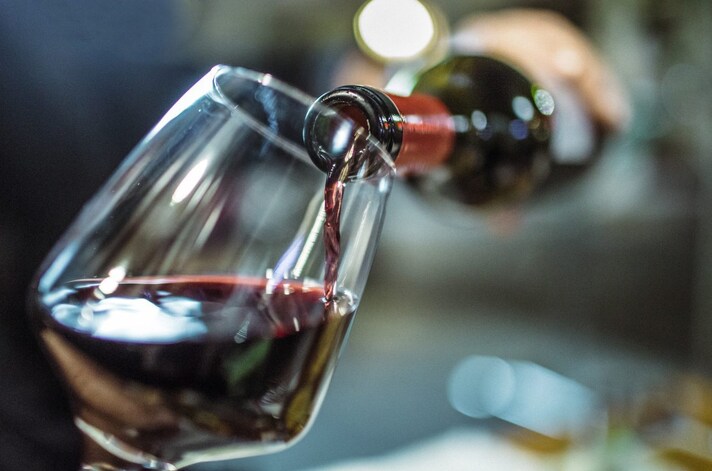
Red wines require large, rounded glasses to promote oxygenation and allow the aromas to evolve and be released to their fullest.
- Young wines: pour the wine up to 2/3 of the glass, reaching the widest part. This allows you to capture its primary aromas and appreciate its freshness.
- Aged wines: If the wine is mature and complex, reduce the quantity to 1/3 of the glass, stopping just before the pot-bellied point. This choice offers more room for oxygenation, enhancing the layered aromatic notes typical of mature wines.
- Dessert wines: these should also be served in small quantities, following the same logic as mature reds: less is more. Dessert wines usually have dedicated glasses. This is a small glass with a wide body and a narrow opening.
2. White and Rosé Wine: Freshness and Lightness
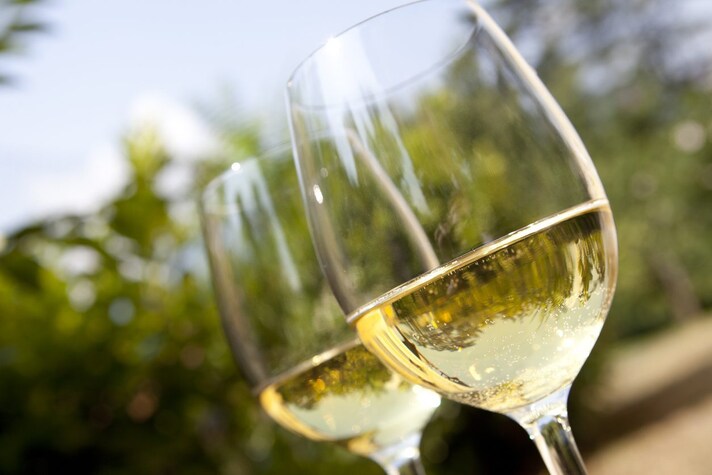
White and rosé wines, known for their freshness and delicacy, require a slightly different approach. Pour the wine up to 2/3 of the glass, slightly exceeding the widest part of the glass. This ensures that the aromas can reach the nose without dispersing. Pay attention to the temperature: to preserve freshness, it is essential not to exceed the 2/3 limit. Overfilling the glass would accelerate the heating of the wine, penalizing the tasting experience. If in doubt, it is always better to pour a little less: white wine and rosé must be served cool and drunk lightly.
3. Sparkling Wine: Elegance and Precision in The Tulip
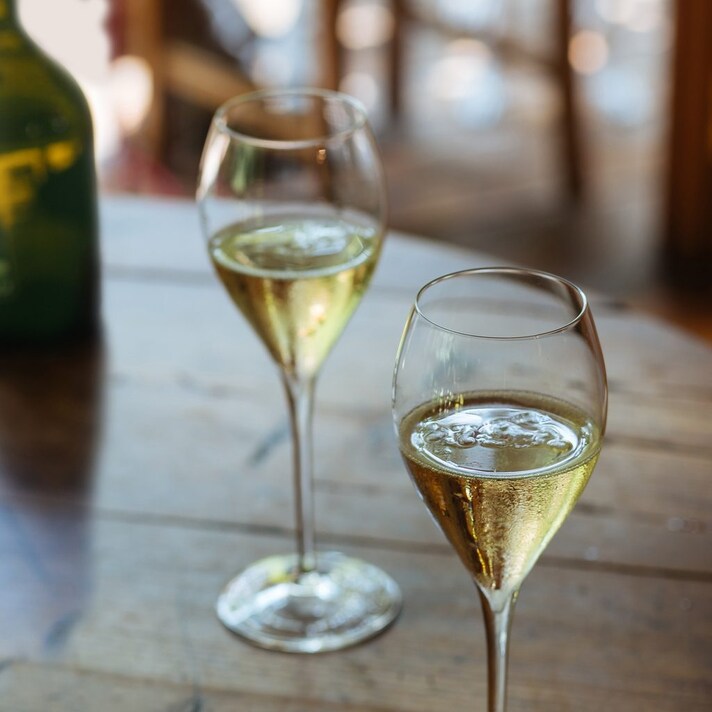
Sparkling wine, a symbol of celebration and conviviality, requires just the right touch to shine in the glass. Use a tulip glass, ideal for maintaining the effervescence and highlighting the perlage. Pour the sparkling wine up to 2/3 of the glass, without exaggerating. This way, the wine will remain fresh and you will be able to appreciate its bubbles without altering its temperature. Little trick: tilt the glass slightly when pouring to reduce the loss of effervescence.
4. Tasting Doses: Combined Itineraries
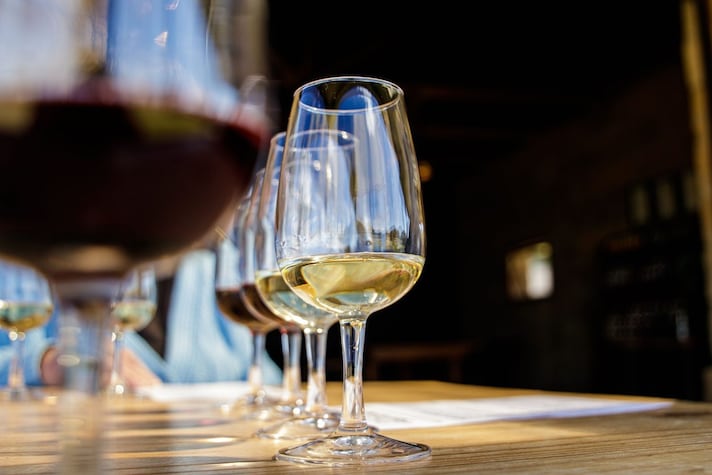
When you choose a tasting menu with wine pairing at a restaurant, the dynamics change completely. In these contexts, you taste different wines paired with each course and for this reason the portions must necessarily be smaller.
For each glass, the serving drops to about 90 ml, allowing you to appreciate the wine without exaggerating. Each wine is served in the right quantity to accompany a specific course, creating a harmony between food and drink. With multiple glasses to taste, keeping the doses contained allows you to enjoy the experience without compromising clarity or taste, without overloading the palate and losing the different nuances between one wine and another. It also serves to enhance the individual bottle, usually prestigious. For this reason, when you do a tasting with wine pairing, our advice is to focus on aromas and flavors, enjoy every sip, leaving the necessary time to appreciate the aromas and flavors.
;Resize,width=767;)
